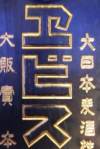Hiragana and katakana
Kanji writing originated from Chinese, but the hiragana and
katakana writing systems originated in Japan, based on the
Chinese characters (see How did katakana and hiragana originate?).
Japanese is unusual in having a writing system that is
"syllabic". Each hiragana (平仮名) or katakana (片仮名)
except one corresponds to either a vowel or a combination of a
consonant plus a vowel. (The exception is the syllabic n, written ん
or ン. See What is syllabic n?) Precisely, each of the kana corresponds
to one mora (see What is the difference between a mora and a syllable?).
The kana have more than one possible ordering. These are discussed in
What is the origin of the gojūon kana ordering? and How does the i-ro-ha ordering go? For methods of remembering
the kana ordering, see Is there a mnemonic for remembering the order of kana signs? Some history of the
kana and the reason for the gaps in the kana chart in the "y"
column appear in Is there a kana symbol for ye or yi?
Copyright © 1994-2025 Ben Bullock
If you have questions, corrections, or comments, please contact
Ben Bullock
or use the discussion forum / Privacy policy





